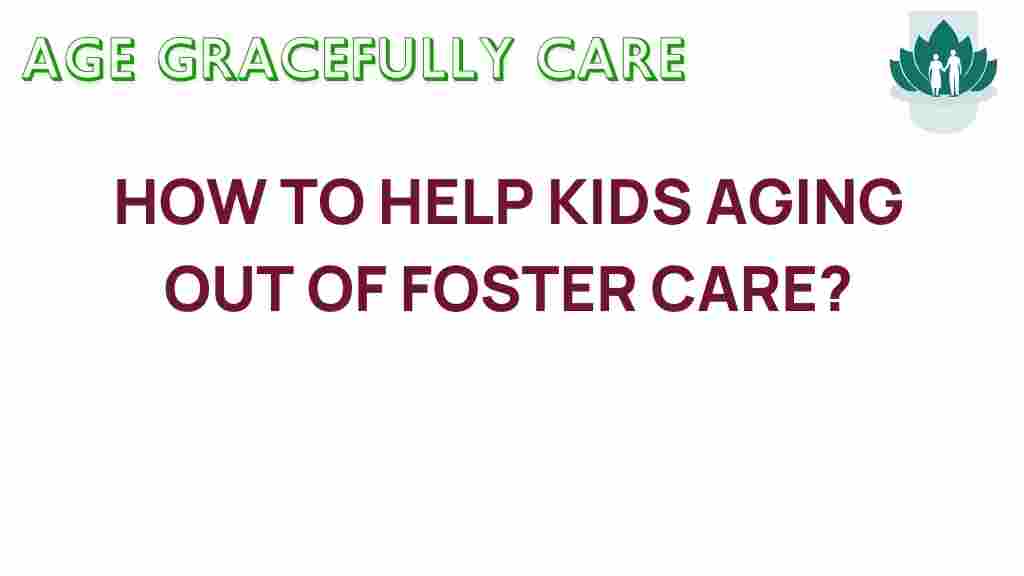As youth transition out of foster care, they face unique challenges that can significantly impact their future. The journey into adulthood can be overwhelming, especially for those who have experienced the instability of the foster care system. Therefore, providing comprehensive support is crucial to ensure these young individuals can develop essential life skills, achieve independence, and thrive in their communities. In this article, we will explore various aspects of youth support, focusing on the transition process, available resources, mentorship opportunities, and the importance of advocacy.
The Importance of Support During Transition
The transition from foster care to independent living is a critical phase for many young people. It is essential to recognize that this journey is not just about leaving the foster care system; it is about stepping into a new chapter of life equipped with the necessary tools to succeed. Providing robust youth support during this time can significantly improve outcomes and reduce the risks of homelessness, unemployment, and emotional distress.
Key Life Skills for Independent Living
To navigate the transition successfully, youth aging out of foster care must develop several key life skills:
- Financial literacy: Understanding budgeting, saving, and managing expenses.
- Job readiness: Developing a resume, preparing for interviews, and acquiring workplace skills.
- Health management: Knowing how to access healthcare, manage medications, and maintain a healthy lifestyle.
- Social skills: Building and maintaining relationships with peers and mentors.
- Cooking and nutrition: Preparing meals and understanding nutritional needs.
These skills are vital for fostering independence and ensuring a smooth transition into adulthood.
Step-by-Step Process for Supporting Youth Aging Out of Foster Care
Supporting youth in their transition out of foster care involves a structured approach. Here’s a step-by-step process:
1. Assessment of Needs
Each youth has unique experiences and needs. Conducting a comprehensive assessment is essential. This should include:
- Identifying strengths and weaknesses.
- Understanding emotional and psychological needs.
- Evaluating educational and vocational aspirations.
2. Developing a Transition Plan
Based on the assessment, create a personalized transition plan that outlines goals and the steps needed to achieve them. This plan should include:
- Short-term and long-term goals.
- Actionable steps for achieving independence.
- Resources available for support.
3. Providing Resources
Access to resources is critical. Ensure that youth are aware of available supports, such as:
- Educational programs and scholarships.
- Job training and employment services.
- Housing assistance and affordable living options.
- Mental health services and counseling.
4. Establishing Mentorship Programs
Mentorship can play a transformative role in the lives of youth aging out of foster care. A mentor provides guidance, support, and a positive role model. Consider the following:
- Connecting youth with mentors who have similar backgrounds.
- Encouraging regular meetings to build trust and rapport.
- Providing training for mentors to ensure they are equipped to support youth effectively.
5. Encouraging Community Involvement
Engaging with the community helps youth build social networks and a sense of belonging. Encourage participation in:
- Volunteer opportunities.
- Local youth groups and organizations.
- Community events and activities.
6. Continuous Advocacy
Advocacy is essential to ensure that the needs of youth aging out of foster care are met at both the individual and systemic levels. This includes:
- Raising awareness about the challenges faced by these youth.
- Lobbying for policies that support foster care transitions.
- Collaborating with local organizations to provide comprehensive support.
Troubleshooting Common Challenges
Even with the best support systems in place, youth may face challenges during their transition. Here are some common issues and tips for overcoming them:
1. Emotional Distress
Many youth experience anxiety or depression as they transition. To address this:
- Encourage open communication about feelings.
- Facilitate access to mental health resources.
- Promote healthy coping mechanisms, such as exercise and art.
2. Financial Difficulties
Managing finances can be daunting. To assist:
- Provide financial literacy workshops.
- Connect youth with financial advisors or budgeting tools.
- Encourage saving and responsible spending habits.
3. Housing Instability
Finding stable housing is a common struggle. To help:
- Collaborate with local housing authorities for available options.
- Educate youth on tenant rights and responsibilities.
- Assist in applying for supportive housing programs.
Conclusion
Transitioning out of foster care is a fundamental moment in the lives of young individuals. By providing robust youth support, focusing on life skills development, mentorship, and community engagement, we can empower these youths to embrace independence. Advocacy plays a crucial role in ensuring that the necessary resources are available and that their voices are heard. As a society, we must come together to support these young adults in their journey toward a successful and fulfilling life beyond foster care. For more resources and information on supporting youth in foster care, visit National Foster Care Organizations and explore the wealth of knowledge available.
This article is in the category Resources and created by AgeGracefullyCare Team
